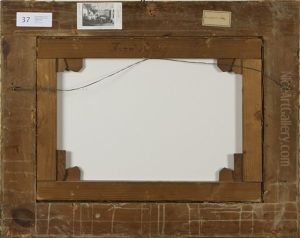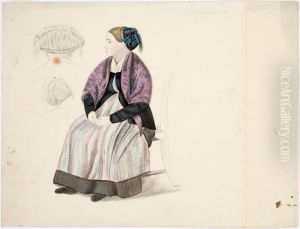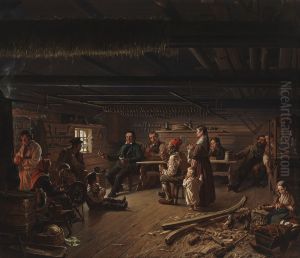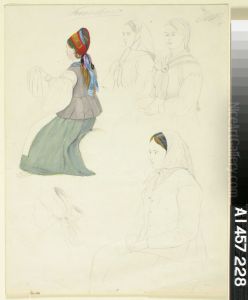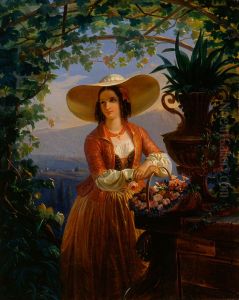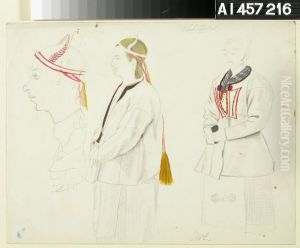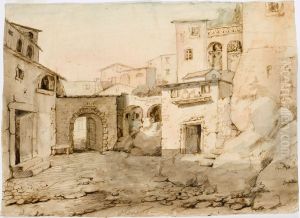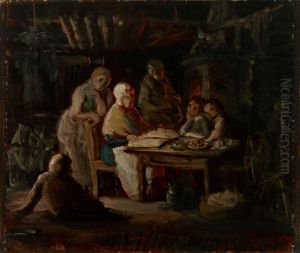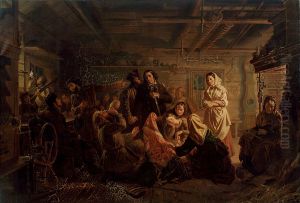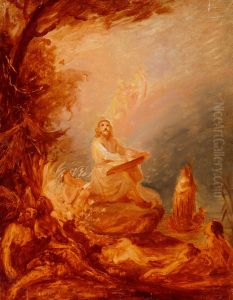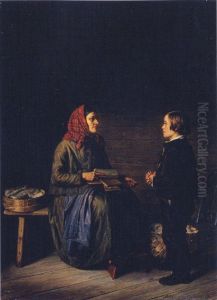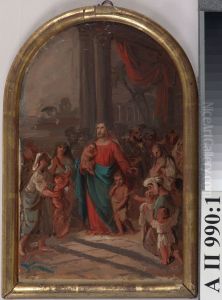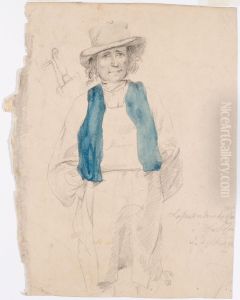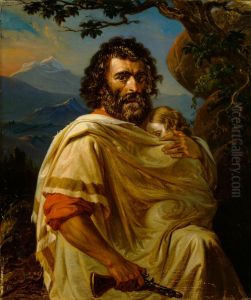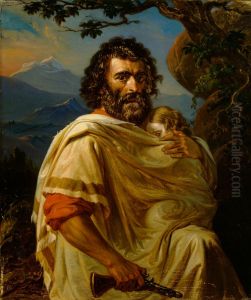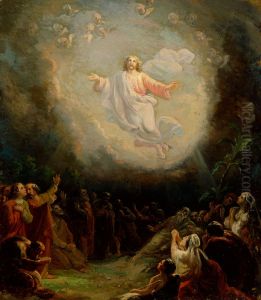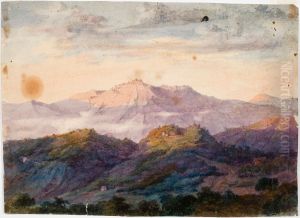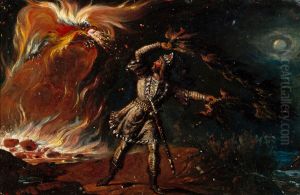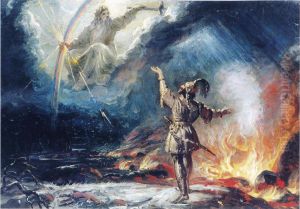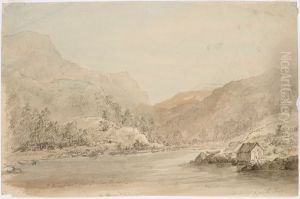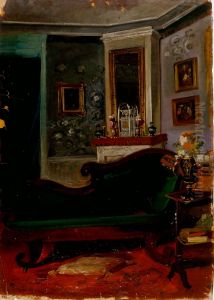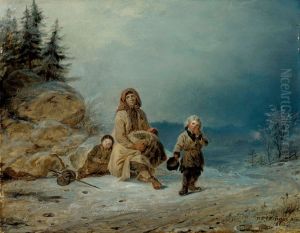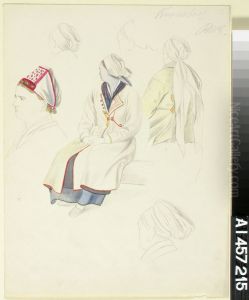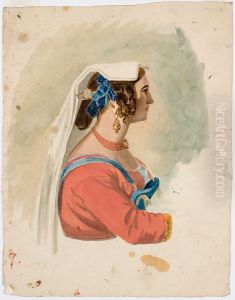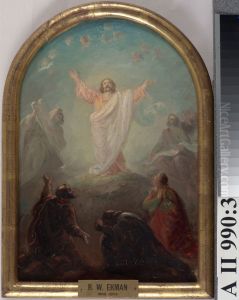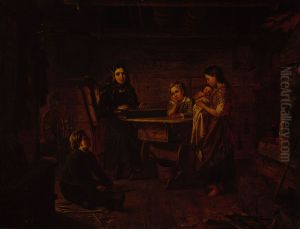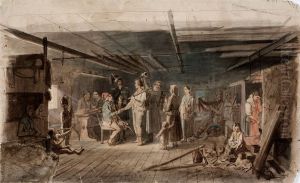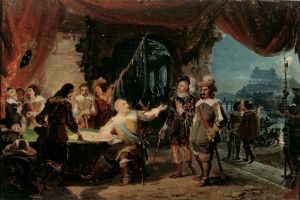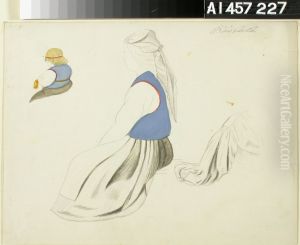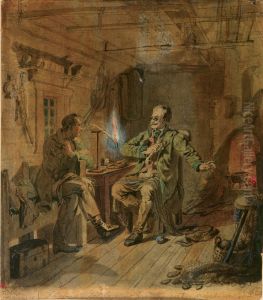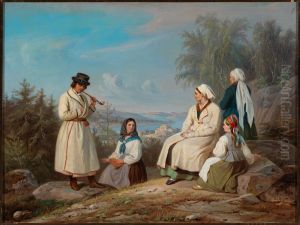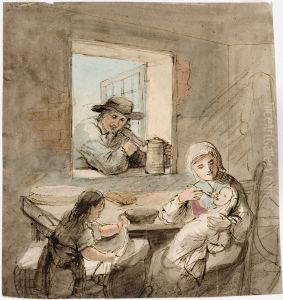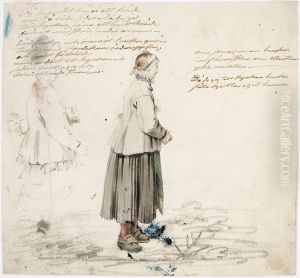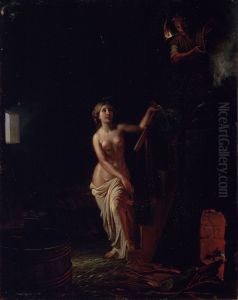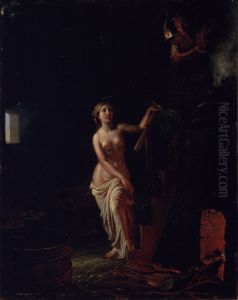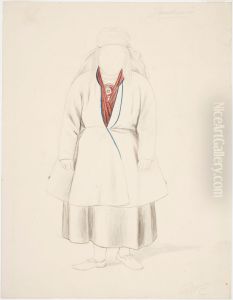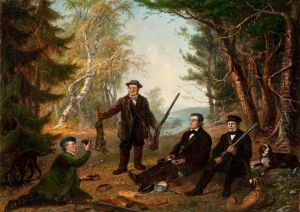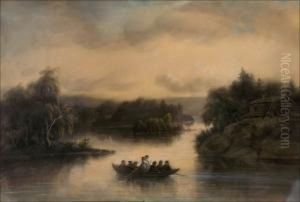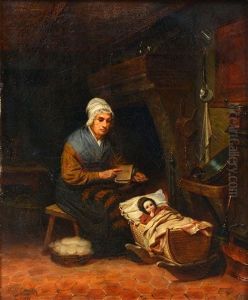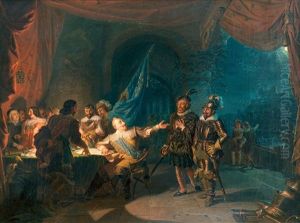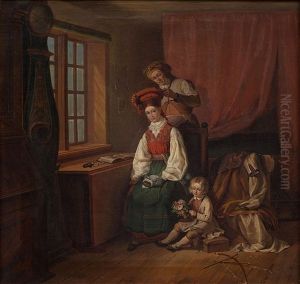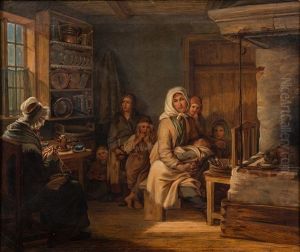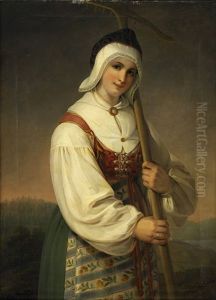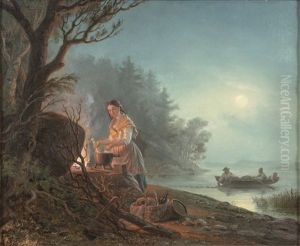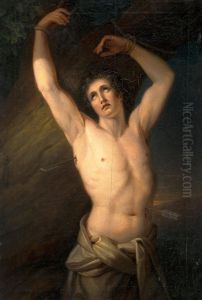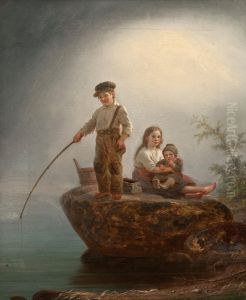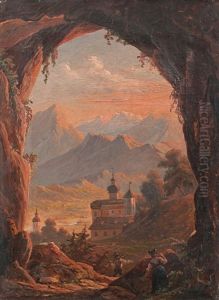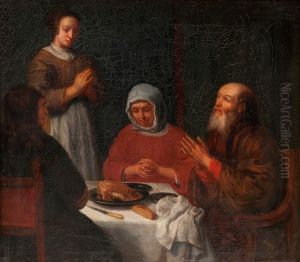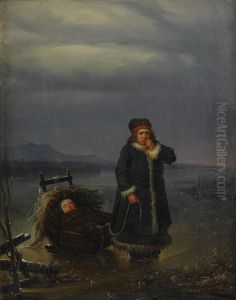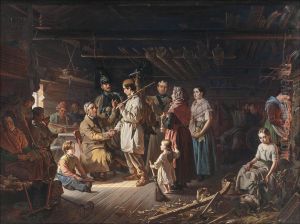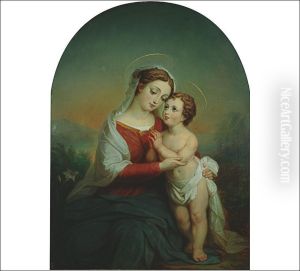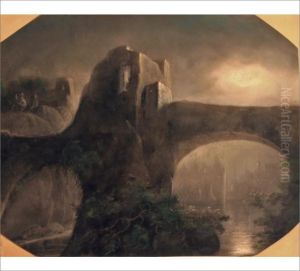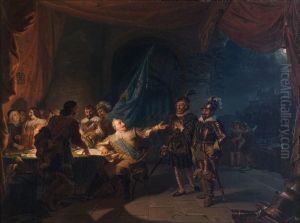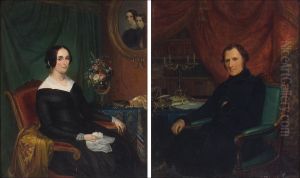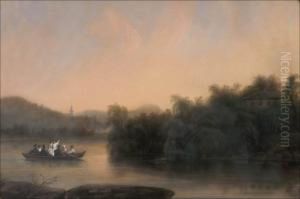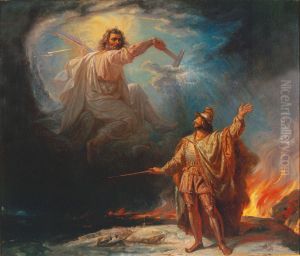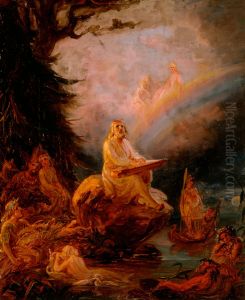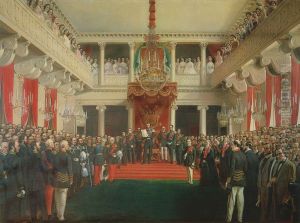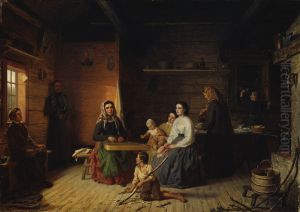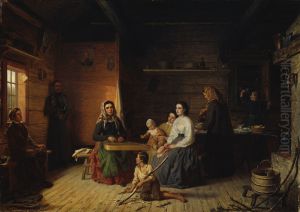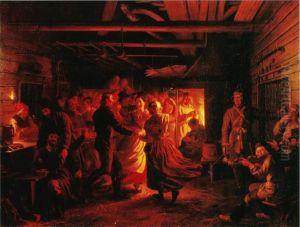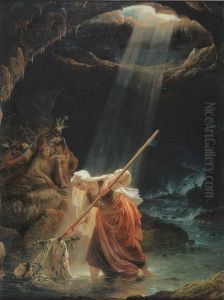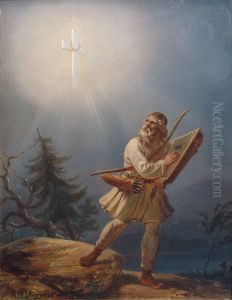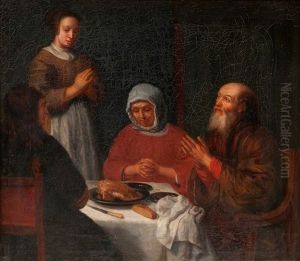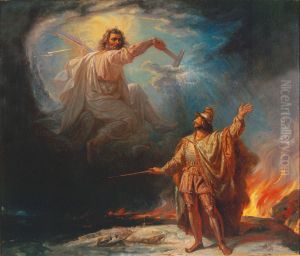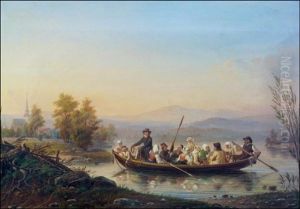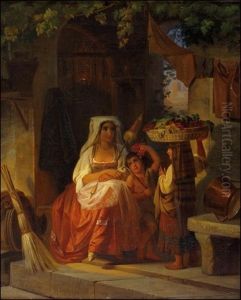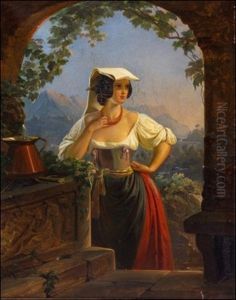Robert Wilhelm Ekman Paintings
Robert Wilhelm Ekman was a notable Finnish painter, born on July 13, 1808, in Uusikaupunki, Finland. He is remembered for his significant contributions to Finnish art, particularly during the 19th century, a period when Finnish national identity was steadily developing.
Ekman's early life was marked by a burgeoning interest in art, leading him to pursue formal studies. He began his artistic training at the Turku Drawing School, which was the first school of its kind in Finland, providing a foundation for many young Finnish artists of the time. His talent was recognized early on, and he was encouraged to continue his studies abroad to further his skills and exposure to different artistic techniques and styles.
In 1826, Ekman moved to Stockholm to study at the Royal Swedish Academy of Arts. During his time in Sweden, he was influenced by the works of Swedish artists and the prevailing Romantic style, which was characterized by an emphasis on emotion and individualism. After completing his studies in Stockholm, Ekman traveled extensively throughout Europe, including visits to Italy and Paris, which were major centers of art and culture. These travels allowed him to absorb a wide range of artistic influences, which he would later incorporate into his own work.
Ekman returned to Finland in the 1830s and quickly became a central figure in the Finnish art scene. He was appointed as a drawing master at the Turku Drawing School, where he had once been a student, and he played a key role in nurturing the next generation of Finnish artists. His paintings often depicted historical scenes, landscapes, and portraits, including notable Finnish figures. Ekman's historical paintings in particular played a role in the construction of a Finnish national identity, as they often portrayed moments from Finland's past that highlighted the nation's history and culture.
One of Ekman's most renowned works is 'The Interruption of the Sermon at Piltene Church' (Saarnaa häiritään Piltene kirkossa), which depicts a scene from the Finnish War of 1808-1809 between Sweden and Russia. This painting is exemplary of Ekman's ability to combine historical narrative with artistic expression, making him an important figure in the Finnish romantic nationalism movement.
Robert Wilhelm Ekman's legacy in Finnish art is significant. He is considered one of the pioneers of Finnish painting and played a vital role in shaping the country's artistic landscape. Ekman's influence extended beyond his paintings, as he was also a respected teacher and mentor to many young artists who would continue to evolve Finnish art after his death. Ekman passed away on February 29, 1873, in Turku, leaving behind a body of work that continues to be celebrated for its contribution to Finnish culture and history.
